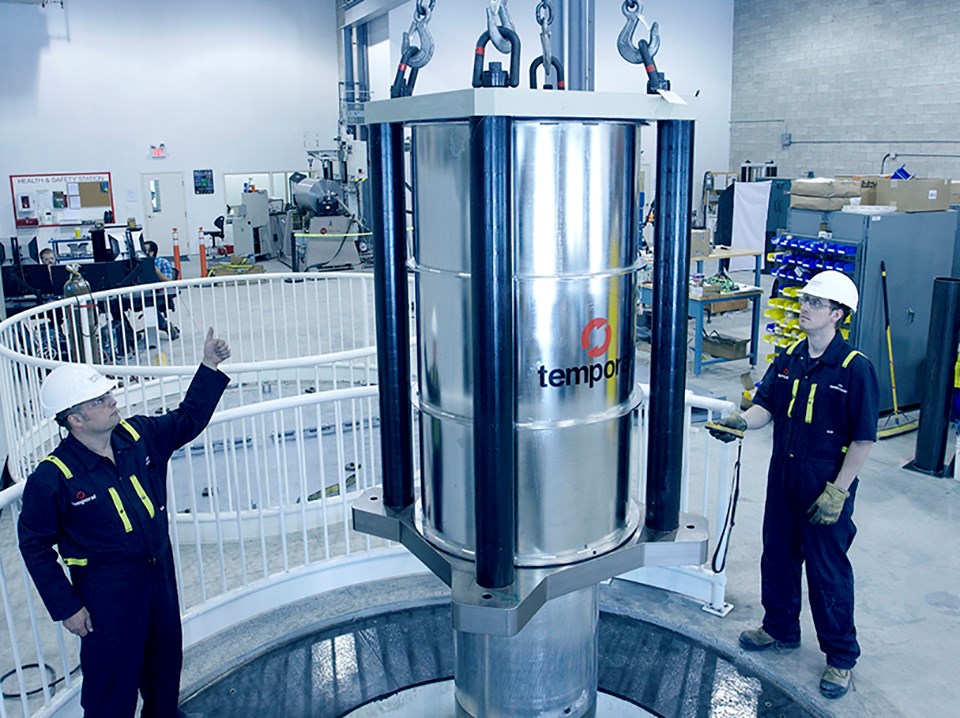Guelph Hydro will be hosting a pilot project that uses innovative flywheel technology to store and disperse electricity onto the grid.
Ten flywheels, each 10 feet in diameter and generating 500 kilowatts apiece, will be placed underground at Guelph Hydro's Arlen Transformer Station. They are expected to be running in the spring.
Those flywheels draw energy from the grid and send electricity out on the grid as needed.
Among other benefits, the technology is seen as a way of stabilizing the grid and providing efficient energy storage, particularly for intermittent energy creation sources like solar panels and wind turbines.
The system is being developed by New York and Toronto-based Convergent Energy and Power who teamed with Mississauga-based Temporal Power to design and manufacture the flywheels.
Frank Genova, the Chief Operating ad Financial Officer at Convergent, said flywheel energy technology has been around for hundreds of years. The difference is that new technology now allows flywheels to store and disperse the energy to be used as needed by the grid.
"It's basically a spinning mass of steel underground that absorbs, stores and injects electricity onto the grid," Genova said over the phone from New York.
He said the technology has the ability to provide very fast response to an external signal to either absorb, store or inject electricity onto the grid and is used to buffer small anomalies or inconsistencies in the electric profile.
"The electricity supply chain is the biggest supply chain in the world and it's one of the only supply chains that doesn't have an inventory mechanism," Genova said.
"It's really unbelievable, the inefficiency the electricity supply chain has, because it doesn't have a storage mechanism."
Genova said flywheel technology and the price point of that technology has finally gotten to the point where it is practical to be used in the electrical supply chain market.
"Energy storage in general ... generally speaking, is actually at the point now where it actually creates a viable business case for utilities."
Convergent signed a contract with The Independent Electricity System Operator that manages Ontario's power network to provide 5 megawatts of power, or enough to power 100,000 50 watt light bulbs.
The project will directly benefit the Ontario grid, not the specific Guelph grid.
"Guelph Hydro’s role in the project is that we will be renting them space at our Arlen Transformer Station and constructing the dedicated connection to the Ontario grid that they will require," said Sandy Manners, spokesperson for Guelph Hydro Electrical Systems.
"The city is not involved in this project. There is no cost to the City, taxpayers or Guelph Hydro ratepayers," Manners said.
The Guelph project is the second pilot project Convergent is involved with in Ontario. A project using a large lithium ion battery system is under construction in Sault Ste. Marie.
"Guelph Hydro is a very progressive utility," Genova said of why Guelph was chosen for the pilot project.
